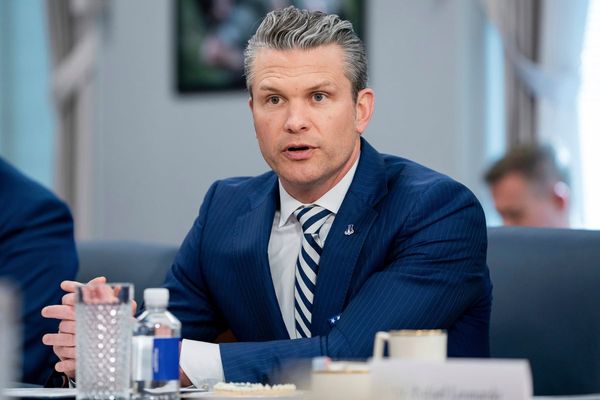
Clean air is a human right. But Delhi remains one of the most polluted cities in the world. Its air quality was poor or worse for 155 days in 2024. So in view of the upcoming Delhi elections and as part of our #FightToBreathe campaign, Newslaundry – along with its panel of experts – proposes 12 steps for a liveable city.
We demand that these measures be included by every political leader and party in their agenda.
Stop pollution at the source
Air pollution is a function of meteorology and emissions. We can’t change meteorology, but can check pollution sources instead of wasting crores of public money on cosmetic measures such as smog towers and anti-smog guns. There should be a focus on reducing emissions from all kinds of sources such as industries, vehicles, etc.
An annual plan, with clear milestones
Delhi is used to short-term fixes such as the GRAP model which can reduce exposure to toxic chemicals but never yield long-term sustained gains. So we need a strategic plan.
It should first comply with the National Ambient Air Quality Standards which were first notified in 2009. And then move towards the World Health Organisation’s interim targets for 2030.
This plan must focus on continuous monitoring and regulation of major pollution sources, including industries, vehicles, construction, and waste management. It must be equipped with an emission load reduction approach and annual milestones.
The progress should be put out in full in the public domain.
Don’t overlook PM2.5
The National Clean Air Programme primarily targets PM10, leading to a disproportionate focus on controlling dust-related emissions. Other critical pollution sources – such as vehicular emissions, industrial pollution, and biomass burning – remain inadequately addressed.
Any plan for Delhi must prioritise PM2.5 – the finer particulate matter that poses the greatest health risks – as it is more directly linked to severe respiratory and cardiovascular diseases. This will ensure a more balanced approach and help develop comprehensive strategies that safeguard public health effectively. A framework should also be built to address rising ozone concentrations as it poses significant health risks.
Monitor, recruit, and deploy
The government should ensure installation of real-time air quality monitoring systems and operate them smoothly while collecting the representative air samples, ensuring transparency and swift action when pollution thresholds are breached. Pollution control norms should be strictly enforced across pollution emission hotspots.
It should also prioritise filling all the vacancies in the Delhi Pollution Control Committee to enhance enforcement of air quality measures. And ensure timely disbursement and effective use of the environment compensation, NCAP funds and other funds available to the Environment Department and DPCC.
Fix transportation
The ever-increasing population of private fossil fuel-run vehicles is eating up all the emission load reduction gains. The government will have to work on a comprehensive transport strategy. Public transportation and non-motorised transport infrastructure must be enhanced.
All the new vehicles the government brings on the road should be electric vehicles. We have transitioned to Euro 6 technology but the next transition should be to fully electric engines. The number of buses should be increased from 8,000 to at least 25,000 considering the population of Delhi. The integration of bus and metro services is also required with last-mile connectivity.
Road space must be rationalised. Strengthen walking and cycling infrastructure and ensure that footpaths are free from encroachments. Potholes and dust from poorly maintained roads, a major contributor to PM10 levels, should be reduced.
Plug industry gaps
Industries have started using natural gas instead of coal to a large extent. But in peripheral areas, many units are yet to transition to clean fuel. The government should closely monitor and prioritise the actual renewable energy share in Delhi's power supply, going beyond contracted capacity to achieve real impact.
Additionally, Delhi must lead the transition to clean energy by setting an ambitious target of meeting at least 50 percent of its annual electricity demand from renewable energy sources by 2028, enhancing the current goal of 25 percent by 2025.
The government should also minimise power purchases from coal-based plants in NCR during winter and ensure zero procurement from plants lacking flue gas desulfurisation systems.
It’s not just waste
Delhi has huge trash mountains and generates around 11,000 tonnes of solid waste every day. The city needs robust solid waste segregation and management infrastructure.
Wet waste should be used for composting. Dry waste should be minimised at source, reused and recycled, so that the waste generation quantum reduces. Segregation can help reduce the amount of waste that reaches Delhi’s landfills each day.
The government should fill the 50,000-worker deficit in sanitation and waste management services. RWAs should be encouraged to reduce, reuse and recycle waste at source; voluntary organisations and NGOs can help. The waste deposited in Delhi’s landfills should also be removed in a time-bound, planned manner.
Control construction
Apart from buildings, construction of public infrastructure such as roads adds to air pollution in the city. This should be controlled by following the stipulated laws and guidelines and ensuring their implementation. More standards should be set to ensure that implementation is strict and the waste generated from these projects is recycled for construction.
Clean heating and cooking
Stiff fines for garbage burning but non-polluting heating options for those who are outside their homes, especially at night. Affordable clean fuel should be provided to the poor and migrants who are forced to burn wood, coal or cow dung for cooking and heating.
Better healthcare
Set up pollution health clinics across Delhi for the poor, elderly and children. Provide regular screenings for high-risk groups. And equip healthcare workers with skills to diagnose and treat pollution-related illnesses, including asthma, bronchitis, and other respiratory conditions.
Shore up funding, spend it
The government needs to earmark a specific budget to clear toxic air.
The central government funds the ‘Control of Pollution’ scheme, which has subcomponents like the National Clean Air Programme and the National Water Quality Monitoring Programme. But the capital lags behind in spending the money it receives from the centre.
Additionally, the state government also lacks a specific budget on air pollution, with the state’s pollution measures being funded through the environment and forest sectors. There is a need to shore up funding and spend it all.
Rope in the community
The government should spread awareness with the help of media (newspaper ads, radio FM, TV and social media handles) to prevent air pollution.
A guideline should be made for the councillors and MLAs of Delhi so that they participate in mohalla and RWA meetings to educate people on how burning garbage and fireworks increases pollution. Community participation to organise air and noise pollution free programmes should be encouraged during festivals.
This manifesto was prepared by Team Newslaundry based on suggestions from an expert panel set up for our #FightToBreathe campaign. We also thank Anumita Roychowdhury of the Centre for Science and Environment for her suggestions.
Here’s how you can join the campaign. Click here to power the #FightToBreathe.
Newslaundry is a reader-supported, ad-free, independent news outlet based out of New Delhi. Support their journalism, here.







